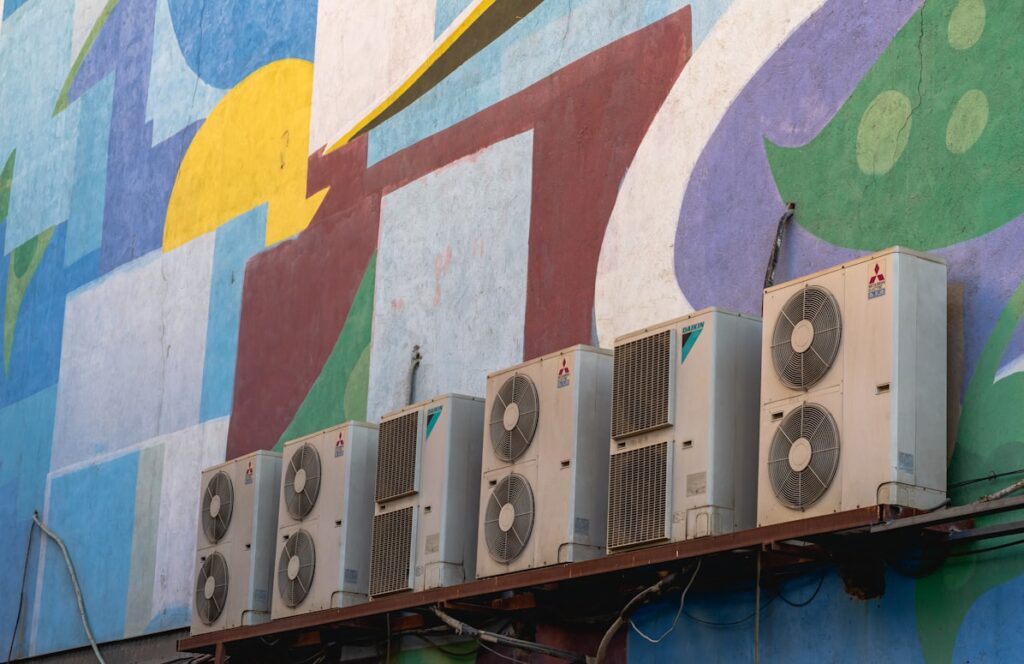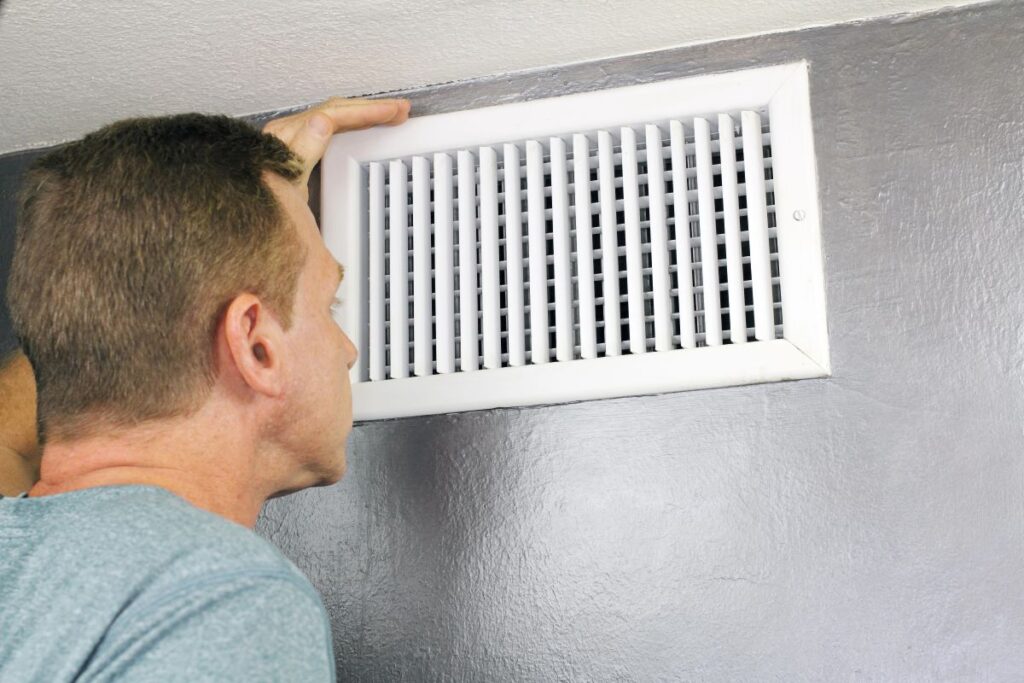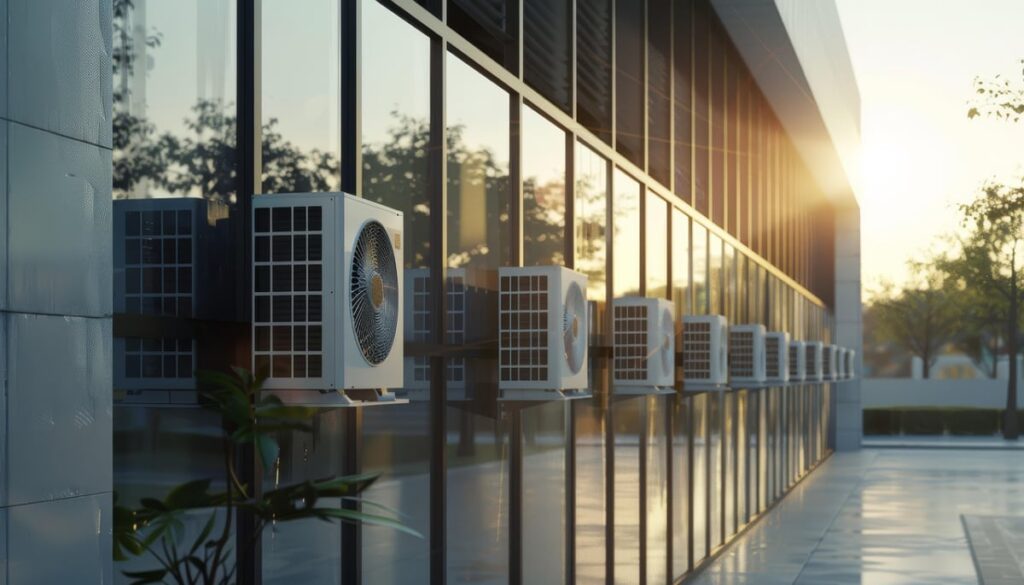You know that feeling. That sudden, eerie silence, or maybe a weird clunk, when your AC or furnace should be humming along nicely? It’s instantly frustrating.
Nobody wants to be stuck in a home that’s too hot or too cold, especially with the added worry of a broken system turning a good day upside down.
When your home’s comfort system acts up, it’s totally normal to feel a bit concerned. But don’t worry! Knowing a little about what might be going on can really help you figure out what to do next.
This guide is here to shed some light on the common reasons why your HVAC might have gone quiet.
We’ll walk you through some simple checks you can do yourself, and just as importantly, we’ll explain when it’s absolutely time to call in the pros.
HVAC Acting Up? Try These Quick DIY Fixes First!
Before you hit the panic button, take a deep breath! Often, a few simple checks can get things back on track.
These quick steps tackle the most common reasons why your HVAC might not be starting. A little detective work now could save you the cost of a service call.
Is Your Thermostat Playing Tricks?
Believe it or not, the simplest solution is often right on your wall: your thermostat!
An incorrect setting, the wrong temperature, or even dead batteries are super common reasons why your system seems to have gone on strike.
Always, always start here before you jump to conclusions about a major breakdown.
First, take a peek at the display. Is it set to the right mode – “Cool” for summer or “Heat” for winter?
Next, try adjusting the temperature: set it much lower (if you want cooling) or much higher (if you want heating) than what your home currently is.
This should kick-start the system. If the screen is blank or dim, just swap out those batteries!
Give Your HVAC a Power Check!
Your HVAC system needs a good, steady flow of electricity to run. It’s built with safety features to prevent electrical problems, which sometimes means it just shuts down completely to protect itself.
So, let’s make sure your unit is getting the juice it needs.
Head to your main electrical panel and look for a tripped circuit breaker – they often look like they’re hanging out halfway between ON and OFF.
Flip it all the way OFF, then firmly back ON.
Don’t stop there! Also, check the big outdoor disconnect switch usually found near your outdoor unit, and that light-switch-looking breaker near your indoor furnace or air handler. Make sure both are set to ON.
Just a friendly reminder: always be careful when you’re messing with electrical stuff!
Don’t Forget Your Air Filter! (It Can Cause Big Problems)
That humble air filter isn’t just for clean air; it’s a huge deal for your system’s health!
When it gets clogged with dirt and dust, it chokes off the airflow, making your HVAC system struggle and work way too hard.
This extra strain can cause it to overheat and even trigger a safety shutdown to protect itself from damage.
Go take a look at your air filter. If it’s looking visibly grimy, dark, and packed with dust and debris, it’s definitely time for a fresh one.
A clean filter lets your system breathe easy, run efficiently, and avoids all that unnecessary strain and those frustrating shutdowns.
Still No Luck? Time for the Pros!
If those quick checks didn’t do the trick, chances are you’ve got a more complex issue on your hands. These kinds of problems usually need the specialized tools, know-how, and experience of a certified HVAC technician.
Trying to fix them yourself could actually be dangerous or just make things worse.
Your Outdoor Unit is Dirty (Condenser Coils)
Your outdoor unit’s condenser coils are super important for kicking heat out of your home. But over time, dirt, leaves, and all sorts of gunk can build up, creating a thick, grimy blanket.
This gunk stops the unit from getting rid of heat properly, leading to overheating and potentially a complete system meltdown.
You might notice your unit running but only blowing warm air, or perhaps the outdoor unit just looks incredibly dirty.
It’s perfectly safe to clear away any big debris around the unit, but please don’t try to deep clean those sensitive coils yourself – that really needs special tools and expertise.
Uh Oh, Is Your Evaporator Coil Frozen?
Seeing ice on your indoor evaporator coil is a big red flag – a clear sign of a serious problem bubbling underneath.
This typically means there’s a major blockage in airflow or your refrigerant levels are low. Either way, it means your system can’t absorb heat properly or deliver that cool air you crave.
Look for visible ice on your indoor unit or the refrigerant lines, super weak (or no) airflow from your vents, and ironically, warm air blowing out.
If you spot a frozen coil, turn off your AC right away! (You can run the fan only to help it thaw faster).
Let it thaw out completely – this might take several hours. Once it’s thawed, it’s absolutely critical to call a pro to figure out why it froze in the first place.
Nasty Clog in Your Condensate Drain Line
When your AC cools your home, it’s also busy pulling humidity out of the air, which creates a lot of water (condensation!).
This water usually flows safely away through a special drain line. But sometimes, slimy algae or other gunk can clog this line, causing the pan to overflow.
When that happens, a safety switch kicks in and shuts down your whole system to prevent a watery mess.
You might notice water puddling around your indoor unit or your system just suddenly stops working.
While you could try a quick fix with some distilled vinegar if the pan is easy to reach, these clogs often need a professional’s tools and know-how for a truly complete and long-lasting solution.
Low Refrigerant? You Might Have a Leak (Big Problem!)
Think of refrigerant as the lifeblood of your AC – it’s that crucial fluid that cycles through, soaking up and releasing heat. If your refrigerant levels are low (and that’s almost always because of a leak), your system simply can’t cool your home effectively.
And it’s not just about poor performance; a refrigerant leak can actually cause severe, expensive damage to your compressor, which is the heart of your system.
Watch out for a constant hissing sound (a tell-tale sign of a leak), ice showing up on your coils, warm air coming from your vents, and your system running non-stop but still not cooling things down.
Finding and fixing refrigerant leaks, then safely refilling your system, takes special tools and EPA-certified technicians. This is definitely not a DIY job!
Something’s Wrong with the Electricals (Capacitor, Contactor, Wiring)
Inside your HVAC unit, there’s a whole network of crucial electrical parts that get motors running and control everything.
Components like capacitors (which give motors that initial powerful jolt to start), contactors, or even damaged internal wiring can all stop your compressor or fans from kicking in.
Symptoms can differ, but you might hear a humming sound from the unit with no fan movement, the outdoor unit refusing to start, or even scarier signs like sparks or smells (like a burning electrical smell).
These problems are seriously dangerous and must only be diagnosed and fixed by trained HVAC technicians. It’s about your safety and keeping your system healthy in the long run!
Blower Motor or Outdoor Fan Gone Rogue
Both the indoor blower motor (which pushes conditioned air all through your home) and the outdoor condenser fan motor (which gets rid of heat from the coil) are absolutely vital for your HVAC to work right.
If either of these motors conks out, your system just can’t do its job effectively and will probably just shut down.
You might notice no air coming from your vents (that’s the indoor blower), the outdoor fan just sitting there, or strange grinding, squealing, or buzzing noises.
Figuring out what’s wrong and replacing these motors correctly takes expert knowledge, specialized tools, and precise adjustments – definitely a job best left to the professionals.
When It’s Time to Call The Weatherman AC (Because Some Jobs Need the Pros!)
When your HVAC system just won’t budge, the truth is, modern units are pretty complicated. Some problems are simply way beyond what a DIY fix can handle.
Trying to tinker with electrical and mechanical parts without proper training isn’t just ineffective; it can be downright dangerous, risking electrical shocks, damaging your system further, or even causing a fire.
That’s where certified technicians come in. They’ve got the specialized tools, extensive training, and tons of experience to accurately pinpoint the real problem behind complex HVAC issues and perform safe, effective repairs.
They make sure your system is fixed right the first time, helping you avoid bigger headaches down the road.
Pro Tip: Preventative Maintenance is Your Best Friend!
Here’s a little secret: many of these headaches, from clogged coils to those tricky electrical bits, can often be avoided with regular professional maintenance.
These preventative check-ups catch small issues before they blow up into major breakdowns, helping your system live longer, run more efficiently, and keep you comfortably cozy, year after year.
Get Your HVAC Back Up and Running with The Weatherman AC
So, while some minor HVAC hiccups can often be sorted out with a few quick DIY checks, many issues really do need the keen eye and skilled hands of a professional.
It’s all about ensuring your safety, boosting efficiency, and getting those repairs done right. Don’t let uncomfortable temperatures ruin your day in Lake Havasu City, Arizona!
If your HVAC isn’t turning on, don’t sweat it. Trust the friendly experts at The Weatherman AC for reliable, efficient, and professional HVAC repair and maintenance services.
For expert diagnostics and prompt repairs, Contact The Weatherman AC today!
And if your system is past its prime or you’re dreaming of an upgrade, we’ve got you covered with our comprehensive HVAC Installation & Replacement Services for a modern, efficient comfort solution.


